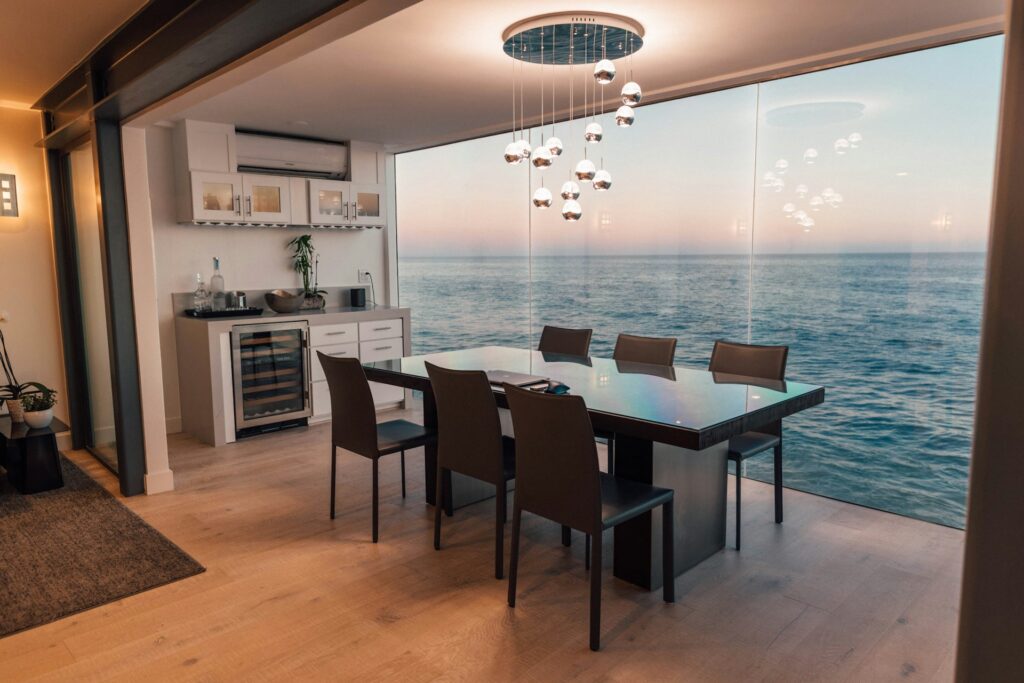Introduction: Welcome to the realm where creativity meets functionality, where spaces come alive with personality and purpose – welcome to the world of Interior Design. Whether you’re revamping your home, office, or commercial space, understanding the fundamentals of interior design is essential to crafting environments that not only look stunning but also enhance your everyday life.
The Essence of Interior Design
In essence, Interior Design is the art and science of enhancing the interior of a space to achieve a healthier and more aesthetically pleasing environment for the people using it. It encompasses a myriad of elements, from color schemes and furniture selection to lighting and spatial arrangements, all orchestrated to create cohesive and harmonious interiors.
Understanding Space and Functionality
The foundation of any successful interior design project lies in understanding the space itself and its intended functionality. Whether it’s a cozy living room meant for relaxation or a bustling office space designed for productivity, each space has its unique requirements and challenges.
Harmonizing Color and Texture
Color and texture are the building blocks of any design scheme, setting the tone and mood of a space. From soothing pastels to vibrant hues, the right color palette can evoke emotions and create visual interest. Similarly, incorporating varied textures adds depth and dimension, lending richness to the overall design.
The Role of Furniture and Accessories
Furniture and accessories not only serve practical purposes but also contribute to the aesthetic appeal of a space. From statement pieces that anchor the room to decorative accents that add personality, selecting the right furniture and accessories is crucial in achieving balance and cohesion.
Lighting: Illuminating the Atmosphere
Lighting plays a pivotal role in interior design, influencing the ambiance and functionality of a space. Whether it’s natural light streaming through windows or strategically placed fixtures casting a warm glow, proper lighting can transform the mood and perception of a room.
Maximizing Spatial Layouts
Efficient spatial layout is essential for optimizing the functionality and flow of a space. Whether it involves reconfiguring furniture arrangements or knocking down walls to create open-concept layouts, thoughtful spatial planning can maximize usability and comfort.
Sustainable Design Practices
In an era of increasing environmental awareness, sustainable design practices have become integral to modern interior design. From using eco-friendly materials to incorporating energy-efficient systems, embracing sustainability not only reduces environmental impact but also promotes health and well-being.
Incorporating Technology
Technology is revolutionizing the way we interact with our environments, and interior design is no exception. From smart home automation systems to innovative lighting solutions, integrating technology into design not only enhances convenience but also adds a futuristic touch to spaces.
Cultivating Personal Style
At the heart of every successful interior design project lies the expression of personal style. Whether your taste leans towards minimalist chic or eclectic bohemian, embracing your unique aesthetic preferences is key to creating spaces that feel truly yours.
Budgeting and Project Management
While the allure of interior design is undeniable, it’s essential to approach projects with practicality and foresight. Establishing a realistic budget and timeline, as well as enlisting the help of skilled professionals, ensures a smooth and successful design journey from concept to completion.
Seeking Inspiration
In a world brimming with inspiration, finding ideas for your next interior design project is easier than ever. From design magazines and online platforms to real-life spaces and nature itself, drawing inspiration from diverse sources allows you to infuse creativity into your designs.
FAQs
How do I choose the right color scheme for my space?
Selecting the perfect color scheme depends on factors such as the room’s purpose, lighting conditions, and personal preferences. Consider starting with a neutral base and adding pops of color for visual interest.
What are some sustainable materials I can use in interior design?
Sustainable materials include reclaimed wood, bamboo, recycled glass, and low-VOC paints. These eco-friendly options not only reduce environmental impact but also promote healthier indoor air quality.
How can I make a small space feel larger?
Maximizing natural light, opting for multipurpose furniture, and using mirrors to create the illusion of space are effective strategies for making small rooms appear larger and more spacious.
What are some common interior design mistakes to avoid?
Common mistakes include overcrowding spaces with furniture, neglecting proper lighting, and ignoring the importance of scale and proportion. It’s essential to strike a balance between functionality and aesthetics.
How can I incorporate technology into my design?
Integrating smart home devices, such as thermostats and lighting controls, allows for convenient automation and customization of your living space. Additionally, incorporating multimedia systems and integrated charging stations adds modern convenience.
What role does biophilic design play in interior design?
Biophilic design seeks to connect people with nature by incorporating natural elements, such as plants, water features, and natural materials, into interior spaces. This approach promotes well-being and enhances the overall ambiance of a space.
Conclusion
In conclusion, interior design is much more than just decorating spaces; it’s about transforming environments to enhance lives. By embracing creativity, functionality, and personal expression, you can embark on a design journey that not only beautifies your surroundings but also enriches your everyday experiences.

